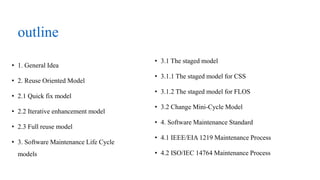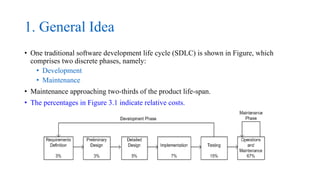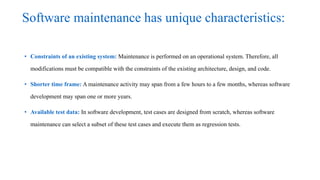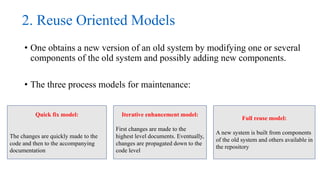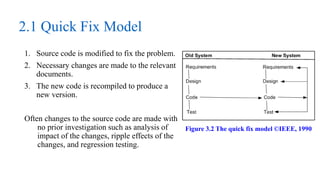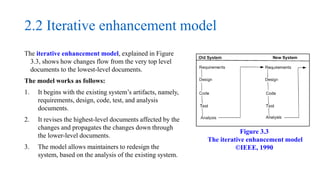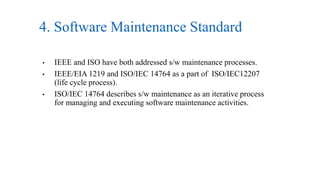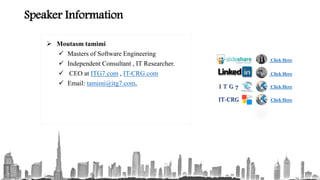The document summarizes several models for software evolution and maintenance. It describes the reuse-oriented model which includes the quick fix, iterative enhancement, and full reuse models. It also outlines the staged model and change mini-cycle model for the software maintenance life cycle. Finally, it discusses software maintenance standards from IEEE and ISO, including the seven phase and iterative maintenance processes.

